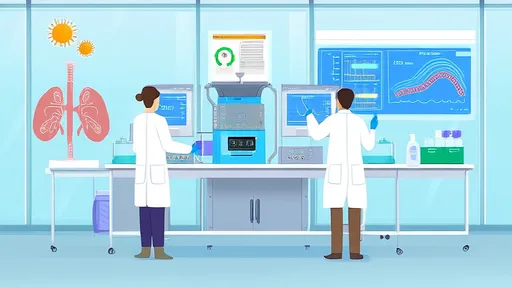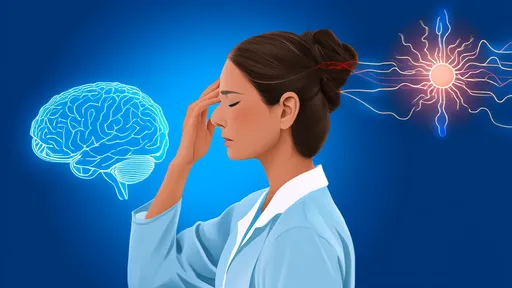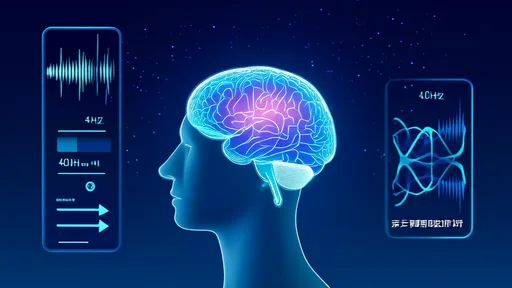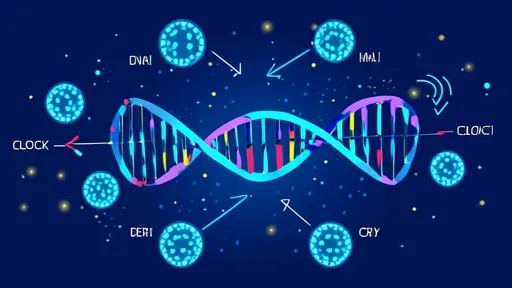The intricate dance of life on Earth follows a rhythm dictated by the planet's rotation, and at the heart of this biological symphony lies the regulation of circadian clock genes. These genes, which govern the 24-hour cycles known as circadian rhythms, are fundamental to the physiological processes of virtually all living organisms. From the sleep-wake cycles in humans to the flowering time in plants, the expression of these genes ensures that biological functions are synchronized with environmental cues, primarily light and darkness.
The molecular machinery of the circadian clock is a marvel of biological engineering. In mammals, the core clock genes include Clock, Bmal1, Per, and Cry, which form a transcriptional-translational feedback loop. The Clock and Bmal1 genes produce proteins that bind together to activate the transcription of Per and Cry. As the levels of PER and CRY proteins increase, they inhibit the activity of CLOCK-BMAL1, effectively shutting down their own production. This loop takes approximately 24 hours to complete, creating a self-sustaining oscillator that drives rhythmic gene expression throughout the body.
Light serves as the primary zeitgeber, or time-giver, for the circadian system. Specialized photoreceptors in the retina detect light and transmit signals to the suprachiasmatic nucleus (SCN) in the hypothalamus, the master clock of the brain. The SCN then coordinates the timing of peripheral clocks found in tissues such as the liver, heart, and lungs. Disruptions to this system, such as those caused by shift work or jet lag, can lead to a misalignment between internal clocks and external time, resulting in metabolic disorders, sleep disturbances, and even increased risk of chronic diseases.
Recent research has unveiled the complexity of circadian gene regulation beyond the core feedback loop. Epigenetic modifications, such as DNA methylation and histone acetylation, play a crucial role in fine-tuning the expression of clock genes. For instance, the methylation status of the Bmal1 promoter can influence its transcriptional activity, while histone deacetylases (HDACs) modulate the accessibility of chromatin to transcriptional machinery. These layers of regulation ensure that the circadian system can adapt to changing environmental conditions and maintain precision in timing.
The impact of circadian gene expression extends far beyond sleep. In the liver, for example, the clock regulates the transcription of genes involved in glucose metabolism and lipid processing. Studies have shown that mice with disrupted clock genes exhibit impaired glucose tolerance and altered lipid profiles, highlighting the importance of circadian regulation in metabolic health. Similarly, the cardiovascular system is under tight circadian control, with blood pressure and heart rate following distinct daily patterns. Disruptions to these rhythms have been linked to an increased risk of hypertension and cardiovascular events.
Circadian rhythms also influence the immune system, with the expression of immune-related genes often peaking at specific times of day. This temporal regulation ensures that immune responses are optimized to meet environmental challenges. For instance, the production of cytokines, which are critical for immune signaling, follows a circadian pattern. Disruptions to this rhythm, such as those caused by chronic sleep deprivation, can weaken immune defenses and increase susceptibility to infections.
In the realm of neuroscience, circadian genes have been implicated in mood regulation and cognitive function. Variations in clock genes have been associated with mood disorders such as depression and bipolar disorder. Animal studies have demonstrated that mutations in Clock can lead to manic-like behaviors, while disruptions to Per have been linked to depressive symptoms. These findings underscore the profound influence of circadian rhythms on mental health and suggest potential avenues for therapeutic intervention.
The study of circadian gene regulation has also yielded insights into aging. As organisms age, the amplitude of circadian rhythms tends to dampen, and the synchronization between central and peripheral clocks may weaken. This age-related decline in circadian function has been correlated with a range of health issues, from sleep fragmentation to metabolic dysfunction. Researchers are exploring whether reinforcing circadian rhythms through lifestyle interventions or pharmacological means could mitigate some of the effects of aging.
Technological advancements have revolutionized our ability to study circadian gene expression. High-throughput sequencing techniques now allow scientists to profile the rhythmic expression of thousands of genes across different tissues. These studies have revealed that a significant proportion of the genome is under circadian control, with the specific genes varying by tissue type. Such findings highlight the pervasive influence of the circadian clock on biology and open new frontiers for research.
Despite these advances, many questions remain. How do circadian clocks communicate across tissues to maintain coherence? What are the precise mechanisms by which environmental cues reset the clock? And how can we harness our understanding of circadian biology to improve human health? These are just a few of the challenges that researchers are tackling as they continue to unravel the complexities of circadian gene regulation.
The implications of this research are vast, touching on fields as diverse as medicine, agriculture, and even space exploration. As we deepen our understanding of how circadian genes are regulated, we move closer to a future where we can optimize our daily routines, treat diseases more effectively, and perhaps even extend healthy lifespan. The study of circadian rhythms reminds us that we are not just passive observers of time but active participants in a beautifully orchestrated biological dance.

By /Jul 14, 2025

By /Jul 14, 2025

By /Jul 14, 2025

By /Jul 14, 2025

By /Jul 14, 2025

By /Jul 14, 2025

By /Jul 14, 2025

By /Jul 14, 2025

By /Jul 14, 2025

By /Jul 14, 2025

By /Jul 14, 2025

By /Jul 14, 2025

By /Jul 14, 2025

By /Jul 14, 2025

By /Jul 14, 2025

By /Jul 14, 2025

By /Jul 14, 2025

By /Jul 14, 2025